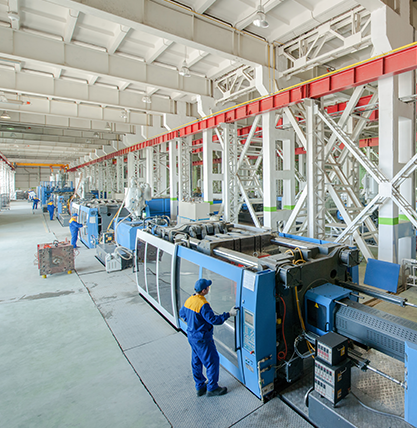Are you interested in pursuing a career as a CNC machinist or programmer? If so, you may be wondering what steps you need to take to break into this exciting field. In this blog post, we will explore the world of CNC machining, discuss the roles of CNC machinists and programmers, and provide valuable insights on how to enter this industry.
What is CNC Machining?
CNC (Computer Numerical Control) machining is a manufacturing process that uses computer-controlled machines to produce highly precise parts and components. This method has revolutionized industrial production by increasing efficiency, accuracy, and speed.
In basic terms, a CNC machine takes a digital design or blueprint and converts it into instructions that control the movement of tools and machinery, resulting in the creation of a physical object or part. This process eliminates human error and allows for consistent, precise results. In some cases, software is built with AI capability to be able to draft layouts or part designs with very little human intervention.
The Roles of CNC Machinists and Programmers
CNC machinists are responsible for operating and maintaining CNC machines. They use their technical skills to set up and calibrate the machines, load materials, and monitor the production process. They also perform quality control checks to ensure that the finished product meets the designated machine specifications.

On the other hand, CNC programmers are responsible for creating the digital instructions that drive CNC machines. They use computer-aided design (CAD) software to develop 2D or 3D models of the desired product. This is where Ai-assisted technology comes in in the new age of digitalization and Industry 4.0. The CNC programmer then inputs specific instructions, such as cutting paths and tooling movements, into the CNC machine.
Types of CNC Machines
Milling
Among the most common type of CNC equipment, the CNC Milling Machine can cut different types of materials, among a few other functions, as specified by the CNC programmer using the universal CNC programming language, G-code.
Lathe
A Lathe machine is similar to a Mill as it also cuts materials as specified by the set programming. But a Lathe cuts pieces as they are rotated centrifugally rather than cutting from one direction at a time.
Laser Cutter
A CNC Laser Cutter can be used to cut a range of materials as its laser intensity can be adjusted to fit the material that it is cutting, making it one of the more versatile and efficient machines.
Plasma Cutter
The Plasma Cutter is like the Laser Cutter, but is generally used to cut heavier materials such as steel and other metals as it uses a concentrated combination of gas and electricity to create the plasma beam to cut materials. It is used to cut heavier materials as the resulting temperature of the beam can reach up to 50,000 degrees.
Router
The CNC Router is similar to the Mill as it can cut a range of materials including steel, wood, aluminum, plastic and more. Although the Router is generally cheaper that a Mill and is better fitted for smaller projects.
Electric Discharge
Last but not least, the Electric Discharge Machine, or EDM for short. This machine can make very precise cuts by placing the desired material between two electrodes and using a spark, or discharge, between them to make the cuts specified by the programming.
Education and Training Requirements
To become a CNC machinist or programmer, you will need to have a solid understanding of mathematics, particularly geometry and trigonometry. Strong computer skills are also essential, as both roles rely heavily on digital programming.
While many machinists and programmers have a high-school diploma, most employers prefer candidates who have completed post-secondary training in machining of computer-aided manufacturing (CAM). These programs can be found at technical schools or vocational schools, community colleges, or universities.
Additionally, certification programs are available for both CNC machinists and programmers. These courses typically involve hands-on training and exams to test competency in specific areas, such as blueprint reading and machine operation.
Gaining Experience and Advancing Your Career
As with any industrial job, gaining experience is crucial for career advancement. Many entry-level positions require a few years of experience working with CNC machines before being considered for more advanced roles.
To gain experience, consider seeking out internships or apprenticeships while completing your education or certification.

These opportunities will allow you to work under the guidance of experienced professionals and learn firsthand about the industry.
Once you have stablished yourself as a skilled CNC programmer or machinist, there are opportunities for advancement to supervisory roles or positions in quality control or even engineering.
Conclusion
Breaking into the world of CNC programming and machining may seem daunting, but with the right education, training, and experience, it is a highly rewarding career path. By pursuing post-secondary education and gaining hands-on experience, you can set yourself up for success in this ever-evolving industry. Keep an eye out for job opportunities and be open to learning new skills to advance your career in the world of CNC operation.
So if you are interested in a challenging and dynamic career that combines your love for mathematics, computers, and technology, consider exploring he world of CNC programming and machining. We hope this guide provides you with valuable insights to help you on your journey towards your career in CNC operation. So don't wait any longer, start pursuing your career today! And if you still need assistance in your search, SkillsetGroup has a team of dedicated industry pros ready to help you find your next big opportunity!
https://www.cncmasters.com/blog/what-is-cnc-programming/
https://www.practicalmachinist.com/vb/general-archive/difference-between-good-great-cnc-machinist-programmer-article-published-129659/#post811072

Top 5 Traits That Make A Great Recruiter
The top tips for recruiting from our experienced professionals in one of California's top staffing agencies. If you are pursuing employment in…...

How Do You Explain Employment Gaps in Your Resume?
Employment gaps in resumes are common, especially after all the COVID-19 pandemic-related layoffs. Be honest and provide clear context about the career…...

How Do You Prepare for a Job Interview?
Nothing hurts quite like knowing you're qualified for a job, but you lose out on the opportunity because you flubbed the interview.…...

How to List a Second Language on Your Resume
In places like the greater Los Angeles area, some job candidates are so used to speaking a second language, they don't list…...

